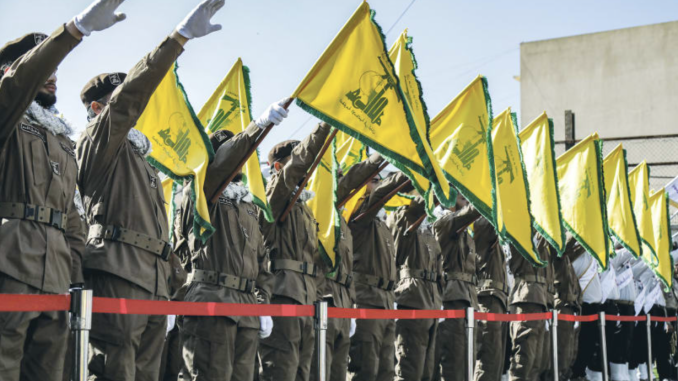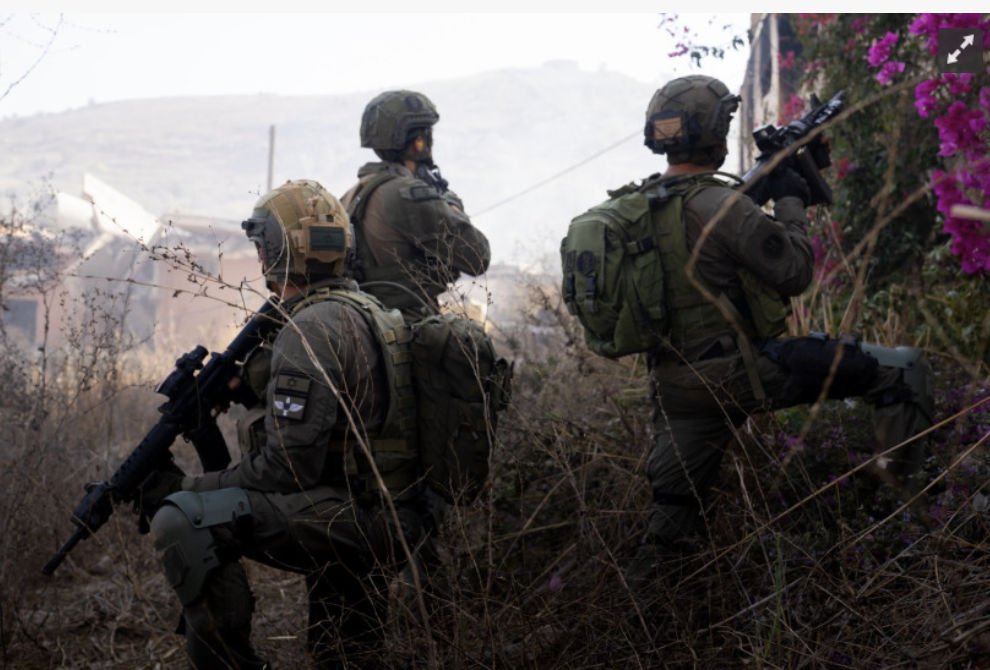A month into the IDF’s ground operation in southern Lebanon, Hezbollah is weakened but still very deadly.
By SETH J. FRANTZMAN | NOVEMBER 3, 2024
 HEZBOLLAH OPERATIVES salute during the funeral of comrades killed in an Israeli strike, in Shehabiya, south Lebanon, April 17. (photo credit: AFP VIA GETTY IMAGES)
HEZBOLLAH OPERATIVES salute during the funeral of comrades killed in an Israeli strike, in Shehabiya, south Lebanon, April 17. (photo credit: AFP VIA GETTY IMAGES)
Israel began its ground operation against Hezbollah on October 1. This means that the entire month of October reflects a month of war on the ground in Lebanon. At the same time, Hezbollah has sought to carry out daily attacks on Israel using rockets and drones.
Hezbollah increased the range of its rocket attacks in response to Israel launching Operation Northern Arrows in September. Israel’s initial targets were Hezbollah commanders, and the IDF used the air force for precision strikes.
The battle with Hezbollah in October increased the number of casualties Israel has suffered in the war. A total of 88 Israeli soldiers and civilians were killed in October. Of those, around thirty soldiers were killed fighting in Lebanon. Nineteen of those killed in October died fighting in Gaza, according to Ynet.
Thirteen people were killed in Hezbollah rocket and drone attacks in northern Israel. Six soldiers were also killed in a Hezbollah drone attack on a training base, and two killed in the Golan. The IDF says that more than 4,400 projectiles crossed into Israel from Lebanon during October. The IDF also estimates more than 1,500 Hezbollah members were killed in October.
Israel’s data on Hezbollah attacks comes in several forms. One of the forms is data covering a year of war from October 2023 to October 2024. Hezbollah had been attacking Israel since October 8, 2023.
 IDF troops operate in southern Lebanon. November 3, 2024. (credit: IDF SPOKESPERSON’S UNIT)
IDF troops operate in southern Lebanon. November 3, 2024. (credit: IDF SPOKESPERSON’S UNIT)
In a year of fighting, the IDF killed more than 800 Hezbollah members in Lebanon. Around 450 of these were killed between October 2023 and September 2024. Many of those were killed in the exploding pagers incident and also strikes on Beirut targeting Hezbollah commanders, as well as the wave of strikes on September 23. That means several hundred were killed from September 17 to October 7.
The IDF had attacked thousands of targets in Lebanon over the year from October 2023 to early October 2024. This vastly increased once Israel launched Operation Northern Arrows on September 23.
It’s worth comparing the high number of Hezbollah attacks in October 2024 with what we know about the year of conflict that took place before the ground offensive. During a year of conflict with Hezbollah, a total of 12,400 projectiles crossed into Israel from Lebanon. That is an average of around 1,000 a month and 33 projectiles a day. Some of these were drones.
Hezbollah’s use of rockets and drones was relatively consistent, month to month. For instance, by August 2024, Hezbollah had launched 7,5000 rockets and more than 200 drones at Israel. By contrast, in the first six months of Hezbollah attacks, a total of 3,100 rockets and drones were launched at Israel by the Iranian-backed terrorist group.
In the first six months of the conflict, the IDF struck 1,400 targets in Lebanon. To put that in perspective, the IDF struck 1,600 targets in just one day on September 23, when the war on Hezbollah began. Several thousand more Hezbollah targets were struck between April 2024 and mid-September 2024 before Israel ramped up its strikes massively.
In October, the IDF increased its strikes on Hezbollah, and the ground offensive has taken a toll on Hezbollah. More than 1,500 Hezbollah operatives may have been killed in October. This is in addition to roughly 1,000 killed between October 8, 2023, and early October 2024.
What is known about Hezbollah’s daily rocket fire throughout October? The IDF releases data on most days reflecting the number of projectiles that have crossed into Israel during each day. For instance on October 3 a total of 230 projectiles crossed into Israel.
These include drones and rockets. In the first days of October, as the ground offensive began, Hezbollah increased its rocket fire from months in the past. Around 200 rockets crossed into Israel every day. There was an increase during Yom Kippur. By mid-October, the number of rockets and drones fired at Israel had decreased slightly to around 150 a day. By the end of the month, the decrease had continued to around 100 a day. Despite the decrease, rockets and drones are deadly. For instance, rocket attacks have killed people in Majd al-Krum, Tarshiha, and Shfaram over the last week.
Israel, Hezbollah increase attacks
The trend in October has been that Israel and Hezbollah both increased their attacks. However, Hezbollah suffered attrition during the fighting. Its rocket arsenal has also been depleted. Israel’s Defense Minister has said that Hezbollah may have lost up to 80 percent of some types of its rockets.
Hezbollah began the war with 150,000 rockets, therefore the group still has tens of thousands of rockets. It can launch 100 rockets a day for many more months or a year. The group also has numerous drones and is likely making more drones locally. However, as the group is pushed back from the border it has lost some of its anti-tank guided missiles because large numbers of them have been uncovered by the IDF. This leaves Hezbollah weakened but still very deadly.



Leave a Reply
You must be logged in to post a comment.